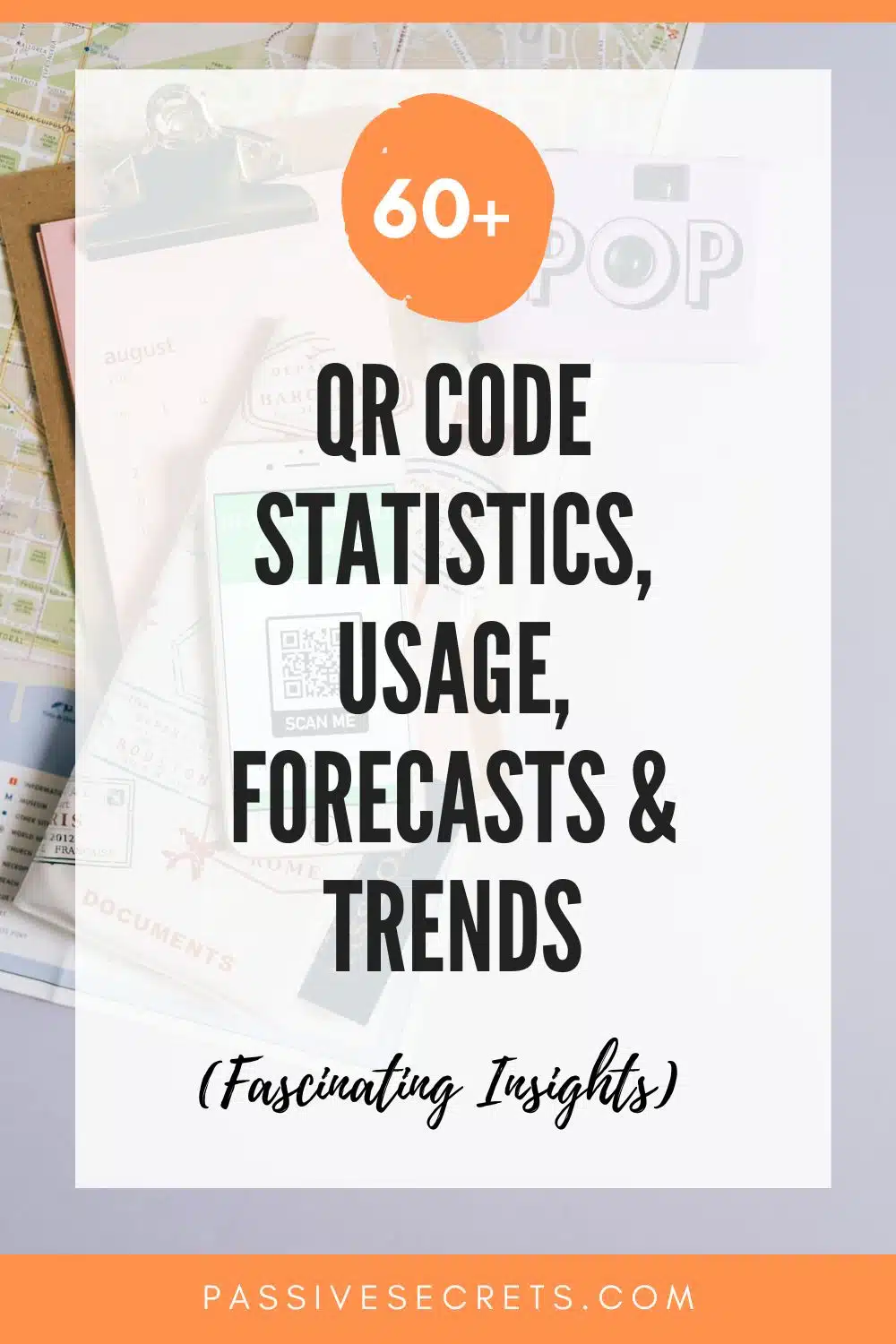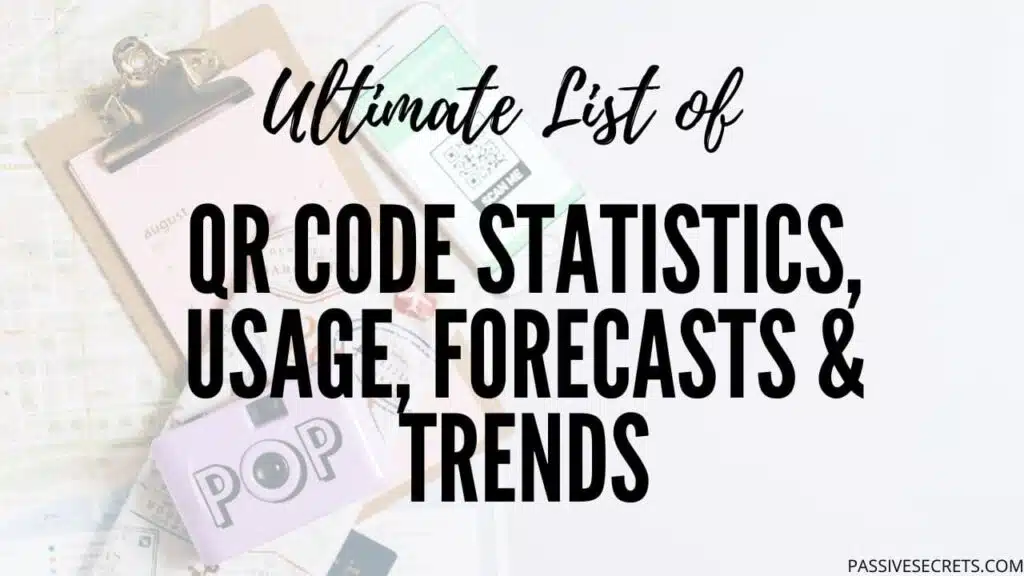
I remember the first time I scanned a QR code. It was like unlocking a secret door to a whole new world of information! These little square barcodes have come a long way since becoming integral to our daily lives.
Did you know that QR code usage has skyrocketed by over 96% in the past year alone? Crazy, right?
Well, buckle up because this article will explore the fascinating world of QR code statistics.
Nowadays, you can’t go anywhere without seeing them, from restaurant menus to product packaging.
Key QR Code Statistics (Editor’s Pick)
- 86.66% of smartphone users have scanned a QR code at least once in their lives.
- Over one-third of shoppers who prefer to pay with QR codes will not purchase if that option is unavailable.
- The global QR code payment market surged to USD 10.28 billion in 2022, with an expected CAGR of 17.03% through 2028.
- China has about 10 billion mobile devices that use QR codes for payments, making it the country with the most QR code usage.
- 11 million U.S. households are forecast to have scanned a QR code.
- The number of U.S. consumers scanning QR codes with their smartphones is expected to grow by 16 million from 2022 to 2025.
- By 2022, an estimated 5.3 billion coupon codes were redeemed via QR codes.
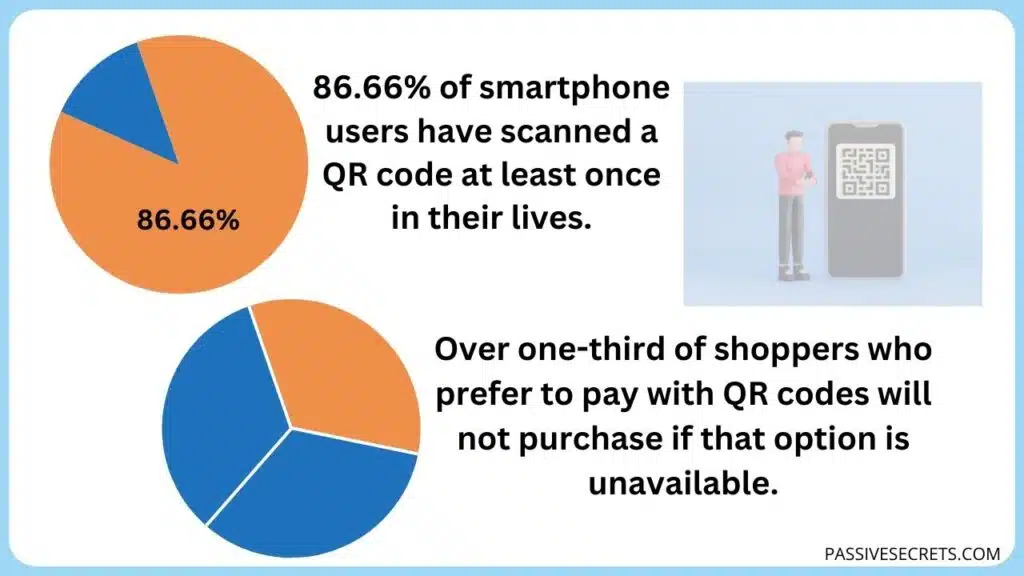
Latest QR Code Statistics, Usage, Trends, and Forecasts
1. 86.66% of smartphone users have scanned a QR code at least once in their lives, and 36.40% scan at least one QR code each week. In addition, 46.81% of respondents believe that QR codes simplify living in a touchless world. (source)
2. In 2022, China had about 10 billion mobile devices that used QR codes for payments, making it the country with the most QR code usage. (source)
3. Also, nearly 89 million Americans used their smartphones to scan QR codes, a 26% increase from 2020. This trend is expected to continue, with the number of mobile QR code scanner users in the US predicted to surpass 100 million by 2025, indicating steady growth in adoption. (source)
4. Global QR code usage statistics recorded 26.95 million scans in over 50 countries. (source)
5. A 2021 survey found that 45% of US shoppers had used a marketing QR code in the past three months, with the highest usage among 18-29-year-olds. Additionally, 59% believed QR codes would become a permanent feature of mobile phone usage. (source)
6. The global QR code payment market surged to USD 10.28 billion in 2022, with an expected CAGR of 17.03% through 2028. (source)
7. In 2020, the global QR code payment market was valued at $8.07 billion and is projected to reach $35.07 billion by 2030, growing at a CAGR of 16.1% from 2021 to 2030. (source)
8. Scantrust SA projected that 67% of Singaporeans made mobile payments via QR code in 2018, with exponential growth expected in subsequent years. (source)
9. In 2022, an estimated 5.3 billion coupon codes were redeemed via QR codes. (source)
10. 42.55% of surveyed respondents felt most secure scanning QR codes at restaurants, bars, or cafés, compared to 19.4% at fitness centers. (source)
11. 38.99% of surveyed consumers desired to see broader use of QR codes in the future. (source)
12. 57% of consumers prefer merchants’ digital payment options while shopping from stores. (source)
13. 67% of respondents agreed that QR codes simplify life. (source)
14. Over 30% of galleries and museums in Italy provide QR codes, with 40% planning to do so in the future. (source)
15. Abu Dhabi has integrated QR codes into signage. (source)
16. 91% of iOS and 86% of Android device users have built-in QR code scanners. (source)
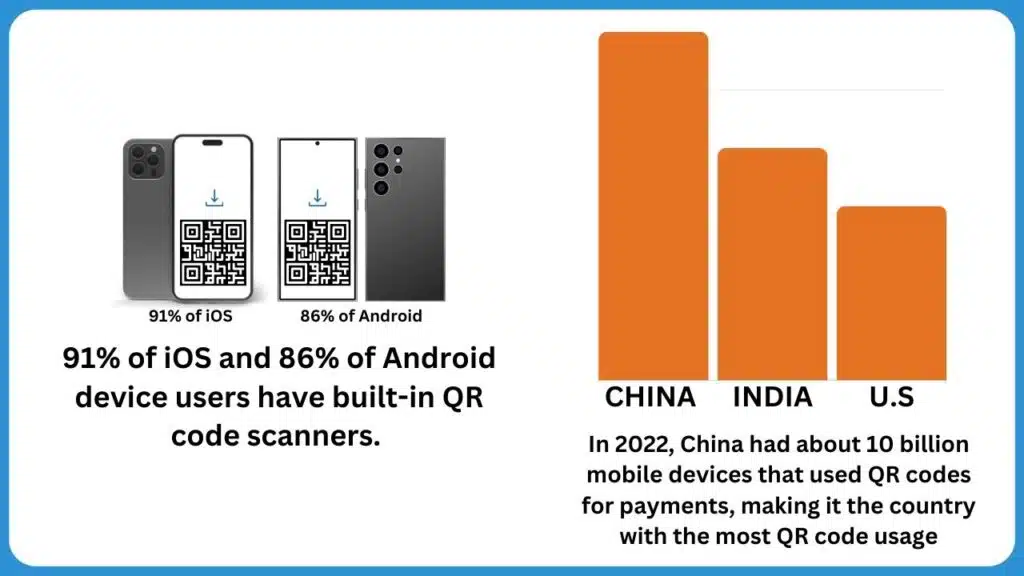
17. Half of U.S. restaurants now offer QR codes. (source)
18. QR code payments in Japan have grown, reaching nearly 15 trillion yen in transaction value. (source)
19. In 2019, Japan introduced a standardized QR code, JPQR, for all participating payment providers. (source)
20. Google Chrome is developing a QR code-enabled page-sharing feature for its Chrome Canary browser. (source)
21. Bitly, a link management service, reported a 750% rise in QR code downloads over the past 18 months. (source)
22. According to Peabody, Mezze and all Boqueria restaurants replaced menus with QR codes during the pandemic. (source)
23. A QR code can encode up to 2953 bytes, 4296 alphanumeric characters, 7089 numeric characters, or 1817 Kanji characters (JIS X 0208 character set). (source)
24. 54% of those aged 18 to 24 have used a marketing-related QR code more often, compared to 48% of adults aged 30 to 44 and 44% of those aged 45 to 64. (source)
25. Like barcodes, QR codes are designed with data redundancy, allowing data recovery even if up to 30% of the code is damaged. (source)
26. Three-quarters of adults are willing to use more QR codes in the future, rising to 82% among adults aged 18-44 but dropping to 64% for those over 45. (source)
27. A Juniper Research study predicted global QR code payment spending will reach over $3 trillion by 2025, up from $2.4 trillion in 2022. (source)
28. QR code creation skyrocketed by 283% in 2022 compared to 2021 and increased by an additional 43% the previous year. While global QR code scans surged by nearly 60% in the same period. (source)
29. Website QR codes are the most popular, accounting for 49% of all codes created in the past 12 months. (source)
30. Major social media platforms use built-in QR codes to add friends by scanning unique codes. (source)
31. In Latin America, QR code transaction values were projected to surpass $1.4 billion by the same year. (source)
QR Code Usage By Country
32. 1 in 5 European consumers were unsure about using QR codes more in the future. (source)
33. About half of Italians and Spaniards plan to use QR codes more frequently, unlike Germans and French, who are more skeptical. (source)
34. Most consumers (two-thirds) find QR codes easy to use, with a clear majority in most markets (except Denmark and the US, where 50% and 44% agree, respectively), considering them a simple way to access information. (source)
35. In Spain, 60% of consumers report using QR codes more frequently than before, while 25% say they are not using them more often. (source)
36. More than three-quarters of consumers in China (81%), Hong Kong (78%), and Singapore (74%) reported using QR codes more actively than before. (source)
37. In 2020, 11 million U.S. households were forecast to have scanned a QR code. (source)
38. The number of U.S. consumers scanning QR codes with their smartphones is expected to grow by 16 million from 2022 to 2025. (source)
39. Contactless payments surged by 150% in the U.S. since March 2019, boosting QR code adoption by 11% since the pandemic began. (source)
40. According to the How We Shop Report, over one-third of shoppers who prefer to pay with QR codes will not purchase if that option is unavailable. (source)
41. By September 2022, Bharat QR code acceptance grew above 4.8 million in India, aiming to standardize QR code payments across merchant outlets. (source)
42. India ranks second with 1,101,723 million scans. (source)
43. 40% of the Indian population is familiar with and uses QR codes. (source)
44. In 2018, the BMC planned to digitize the Cooperage Bandstand in Colaba, Mumbai, with a QR code. Hindustan Petroleum introduced a customer feedback initiative via QR code that same year. (source)
45. UPI QR codes grew by 79%, reaching 272 million as of June 2023. (source)
46. In India, the transaction value of QR code payments is expected to rise from $62 billion in 2022 to $125 billion in 2026. This is driven by a national QR code standard and reduced cash usage. (source)
47. More than half of Mexicans reported using QR codes more actively, while about a quarter did not. Mexico led North American markets, with most planning to use QR codes more frequently. (source)
48. According to GSMA 2020, Mexico’s overall annual QR code digital payment transaction growth rate is predicted to be 18.8% between 2020 and 2024. (source)
49. 36% of Canadians avoid shopping where contactless payments aren’t accepted, and 50% limit purchases to avoid exceeding contactless limits. (source)
50. According to Statista, 57% of consumers scan a food QR code to obtain product-specific information. 43% scanned food QR codes to visit the brand’s website. 34% scanned food labels for product or company information, 25% for recipes, and 9% for games. (source)
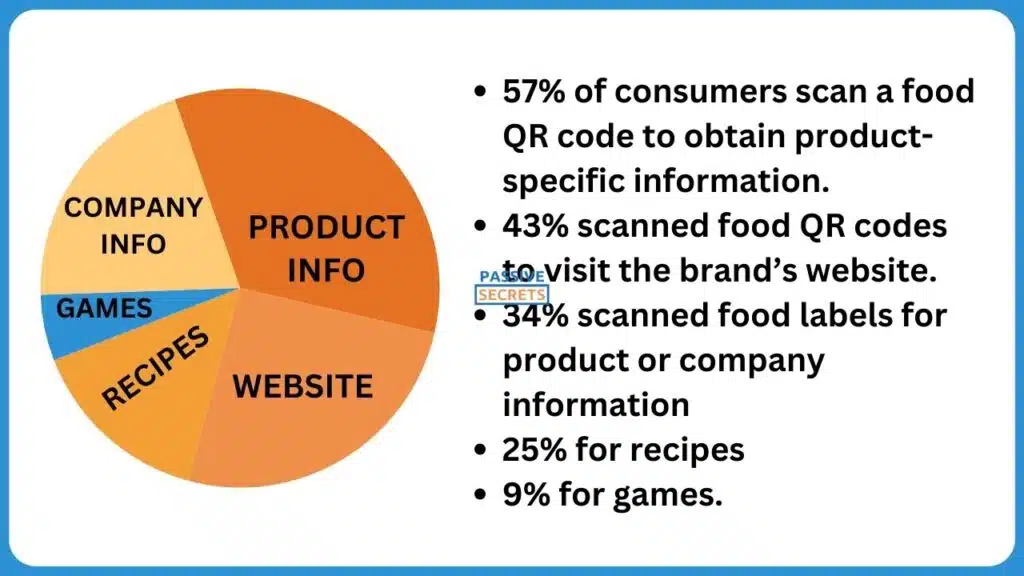
51. 16% of males and 10% of females used smartphones to scan QR codes for information. (source)
52. In 2020, MobileAssist, a Bahamian financial technology firm, teamed with Super Value to allow customers to pay for groceries with QR codes. (source)
53. QR code usage in the Bahamas is growing, with over 90,000 downloads and 7,500 registered users of MobileAssist’s app. (source)
54. The Central Bank of the Bahamas introduced a digital Bahamian dollar using QR codes for payments and fund transfers. (source)
55. AML Foods partnered with Kanoo to introduce QR code payments in their stores. (source)
56. Inbound travel to the Bahamas is streamlined with QR codes. (source)
57. Foreign students accepted to study in the Bahamas receive a special QR code to show upon arrival. (source)
58. In 2018, 3% of adults in Argentina used QR code payments, a figure forecasted to rise to 24% in 2022. (source)
59. Two networks dominate QR code payments in Argentina: Mercado Pago and TodoPago. (source)
60. Mercado Pago processed 8.2 million QR code transactions in its first year, with 3 million users as of March 2019. (source)
61. TodoPago has 1.5 million buyers and 600,000 merchants, tripling its app downloads in 2018 due to its QR code push and continuing to grow. (source)
Conclusion
QR codes have dramatically transformed how we interact digitally, and their adoption has surged across various industries.
From elevating marketing strategies to simplifying consumer experiences, QR codes revolutionize how businesses connect with their audience.
The QR code statistics vividly show a global trend towards embracing this technology, highlighting its convenience and versatility.
As businesses adapt to a digital-first world, the widespread adoption of QR codes signifies a shift towards more efficient and contactless interactions.
With an expected surge in usage and market value, QR codes are poised to become an integral part of our daily lives, seamlessly bridging the gap between the physical and digital realms.
Frequently Asked Questions
1. Are QR Codes still relevant in 2024?
QR Code creation increased fourfold between 2021 and 2024, and QR Code use is predicted to increase significantly worldwide by 2024. This would be powered by brands and businesses recognizing QR Codes’ ability to engage customers, deliver useful information, and streamline user experiences.
2. What percent of people use QR codes?
About 86.66% of smartphone users have scanned a QR code at least once. Also, 36.40% scan at least one QR code each week.
3. How can we check how many people have scanned a QR code?
If you created a Dynamic QR Code, you will see a link underneath the total number of scans next to your code. In contrast, a Static QR Code will not display total scans or provide access to additional tracking information. Metric data is delivered in real time.
4. Which country uses QR codes the most?
The number of countries using QR codes varies according to different sources. Some said China had nearly 10 billion mobile devices that used QR codes for payments, significantly more than any other country worldwide. Another said the United States leads with a total of 2,880,960 million scans.
5. Do QR codes expire?
No, static QR codes do not expire. They remain unchanged and always lead to the same destination, such as a website or specific information.
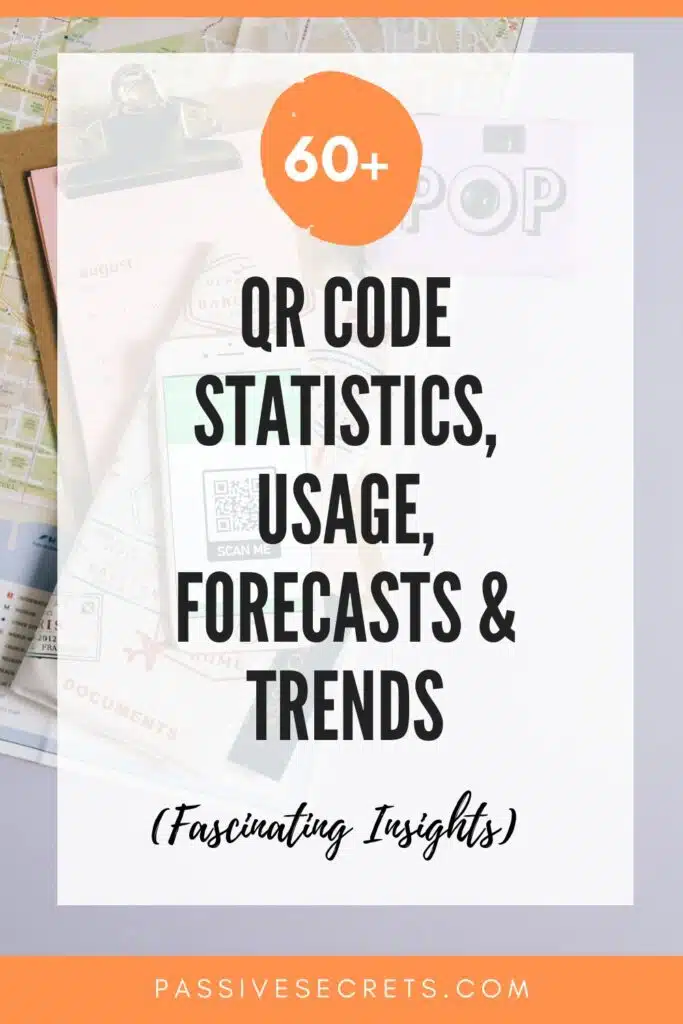
Other Statistics Posts You Should Know:
- B2B Sales Statistics: Latest Insights and Trends
- 50+ Essential Traditional Marketing Statistics & Trends
- 90+ Useful Marketing Jobs Statistics & Facts (Latest Report)
- Sales Enablement Statistics: Data You Need to Drive Sales Growth
- In-store vs Online Shopping Statistics And Analysis
- Social Media Addiction Statistics
- Latest In-Game Advertising Statistics
- From Passion to Profit: 120+ Creator Economy Statistics
- 80+ Big Marketing Software Statistics
- 45 Interesting Healthcare Marketing Statistics & Trends
- Print Marketing Statistics: Ad Spending, Market Size, & More
- Key Short-Form Video Statistics and Trends You Should Know
- 49 Interesting Emotional Marketing Statistics
- 90 Amazing Millionaire Statistics
- 70+ Top Law Firm Marketing Statistics & NEW Trends
- Millennials on Social Media Statistics
- 23 Most Interesting First Impression Statistics To Know
- 60+ Interesting Storytelling Statistics, Facts & Huge Trends
- Amazon Book Sales Statistics: Intriguing Numbers and Facts
- 61+ Useful Podcast Advertising Statistics And Trends
- 50+ Useful Call Center Statistics And Trends
- 50 Crucial Amazon Advertising Statistics & Trends
- 65+ Must-Know Pay-Per-Click Statistics
- 40+ Interesting Omnichannel Marketing Statistics & Trends
- Multi-Level And Network Marketing Statistics, Facts & Trends
- Virtual Event Statistics & Benchmarks For Marketers & Organizers
- 55 Interesting Direct Mail Marketing Statistics and Trends
- B2B Lead Generation Statistics, Facts, Trends, Benchmarks, & Market Size
- 52 Valuable Trade Show Statistics and Trends
- 100+ Top Digital Marketing Vs. Traditional Marketing Stats
- 110+ Important Social Media Advertising Statistics & Trends
- 50 Interesting Organic Vs. Paid Search Statistics To Know
- 41+ MOST Important Copywriting Statistics To Know
- 80+ Useful Sales Funnel Statistics & Conversion Rates
- 40+ Latest Multi-Channel Marketing Statistics & Huge Trends

